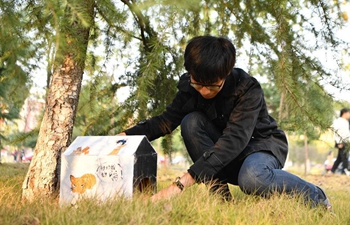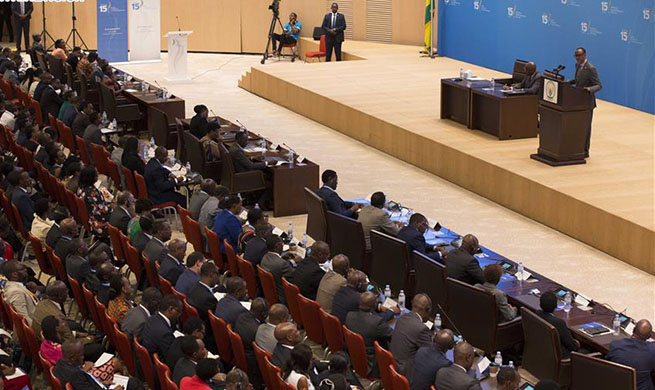HOHHOT, Dec. 20 (Xinhua) -- From raising cattle and sheep to chickens and ducks, villagers in Yelelt, north China's Inner Mongolia Autonomous Region, have come up with a string of ways to make money, including raising peafowl.
Although the farmland is now covered with snow, Zhou Haiyan's home has a tropical appearance with proud peacocks strutting across the yard or sitting in trees combing their feathers.
Peacocks, the brightly colored males of the peafowl species, are a symbol of good fortune and well-being in China. The species has become a successful breeding industry and tourist attraction for Yelelt, an ethnic Mongolian village in the city of Ulanhot, Hinggan League.
However, in the beginning it did not all go smoothly. In 2010, Zhou began purchasing peafowl from breeders in southern Yunnan Province, but the first 10 peahens all froze to death.
Zhou had to work out how to help birds, native to tropical forests, survive through the biting cold of an Inner Mongolian winter.
"I decided to purchase peafowl raised in northern China, as they may have already adapted to the cold weather," Zhou said. She purchased 50 peahens from a farm in Qiqihar, northern China's Heilongjiang Province. They soon laid around 300 eggs.
But Zhou continued to face challenges in learning how to raise peafowl. "Some chicks died of malnutrition, while others were stolen by mice," Zhou said. "It was not until 2013 that I made my first profit."
After learning by trial and error, Zhou developed a more nutritional feed, built a 1,200-square-meter shed with solar panels to keep the birds warm and purchased two incubators, each of which can incubate up to 600 eggs every ten days.
Zhou has established a cooperative of 59 rural households, including two under the national poverty line, per capita annual income of 2,300 yuan (348 U.S. dollars).
Gong Shuying, 68, was among Inner Mongolia's 556,000 impoverished residents. She now raises six birds, two peacocks and four peahens.
"Years ago, I only saw peacocks at the zoo," said Gong. "But now I rely on them to lift my family out of poverty."
One peahen can lay at least 10 eggs per year, earning 1,880 yuan in profit for Gong. It can continue laying eggs for between five to 10 years.
More than 1.4 million people were lifted out of poverty in Inner Mongolia between 2012 and 2016, with the poverty rate dropping from 14.7 percent to 4.1 percent.
"The development of industries has played an important role in the fight against poverty," said Zhou. "My cooperative will help more people out of poverty."
She will sign agreements with another ten impoverished households this month and provide each with around 20 peafowl for free. Zhou also provides training on technology, disease control and prevention and even marketing.
With an annual income of around 3 million yuan, the cooperative has provided live peafowl for 18 zoos, farms and gardens nationwide. It also sells peacock specimens, tail feathers and eggs.
"A specimen costs at least 3,800 yuan, a tail feather 10 yuan and an egg 35 yuan," said Zhou.
The cooperative has registered its logo using an artwork made of peacock feathers. Some of the breeders use peacock feathers to draw pictures or sew cross-stitch, which are sold to tourists.
"My next step is to expand my business to woo more tourists and make the peafowl breeding industry strut across the grassland," said Zhou. "Tourists can see beautiful peacocks, take photographs with them, and purchase eggs and artworks." Enditem















